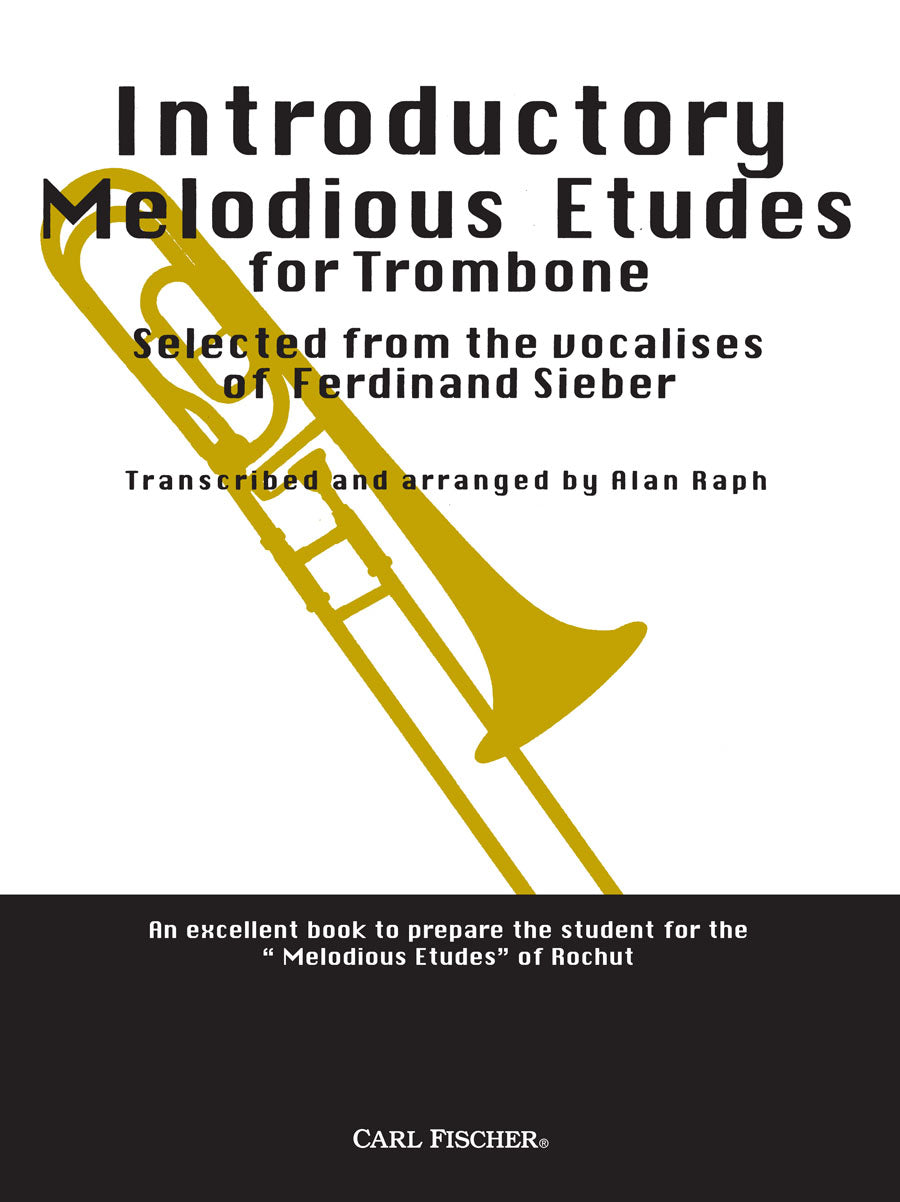Introductory Melodious Etudes for Trombone
Expected to ship in 1-2 weeks.
- Composer: Mátyás Seiber (1905-1960)
- Editor: Alan Raph (1933-)
- Instrumentation: Trombone
- ISBN:
- Size: 9.1 x 11.9 inches
Description
The purpose of Introductory Melodious Etudes is to give the trombonist a chance to practice the various techniques of legato playing without taxing his endurance. Each study is eight measures long and offers a complete musical statement. Ferdinand Sieber (1822-1895) was a well-known singing teacher in Dresden and Berlin. His teaching was in the Italian tradition and his vocalises make excellent studies in legato phrasing to prepare the student for the more extensive Bordogni etudes found in Melodious Etudes by Rochut. in legato playing, the changing from one note to another (without stopping the sound) is most effectively done by lightly tonguing each note. By doing so, the sound remains even throughout and the "lip break" or the "glissando" is avoided. The tongue stops one note and begins the next at the same moment. Once there is any separation between notes, the legato is lost.
There are different approaches to playing legato on the trombone, from the full-toned symphonic sound to the more narrow and intense sound of the jazz player. The trombonist who can vary his sound to fit the different types of music he is called upon to perform, will find this to be to his advantage. in this book certain slide positions are suggested to minimize the distance the slide has to travel between notes, thereby enhancing the legato capabilities. The trombonist should cultivate the "alternate" positions both in tone and intonation and thereby gain in techniques of expression. Phrase markings have been edited in some instances to make the music more trombonistic. (Remember these are vocalises and originally dealt with syllables as well as tones). Certain of these changes may be made at the player's or the teacher's discretion.
Publishers use a lot of words to describe what they sell, and we know it can be confusing. We've tried to be as clear as possible to make sure you get exactly what you are looking for. Below are descriptions of the terms that we use to describe the various formats that music often comes in.
Choral Score
A score for vocalists that only contains the vocal lines. The instrumental parts are not there for reference. Generally, cheaper than a vocal score and requires multiple copies for purchase.
Facsimile
Reproductions of the original hand-written scores from the composer.
Full Score
For ensemble music, this indicates that the edition contains all parts on a single system (there are not separate parts for each player). In larger ensembles, this is for the conductor.
Hardcover
Hardbound. Generally either linen-covered or half-leather.
Orchestral Parts
Similar to a wind set, this is a collection of parts. In the case of strings, the numbers listed are the number of copies included, though generally these are available individually (often with minimum quantities required).
Paperback
When publishers offer multiple bindings (e.g. hardcover) or study scores, this is the "standard" version. If you're planning to play the music, this is probably what you want.
Performance / Playing Score
A score of the music containing all parts on one system, intended for players to share. There are not separate parts for each player.
Set of Parts
For ensemble music, this indicates that there are separate individual parts for each player.
Solo Part with Piano Reduction
For solo pieces with orchestra, this is a version that contains a piano reduction of the orchestra parts. For piano pieces, two copies are typically needed for performance.
Study Score
A small (think choral size) copy of the complete score meant for studying, and not playing. They make great add-ons when learning concertos and small chamber works.
Vocal Score
A score prepared for vocalists that includes the piano/organ part or a reduction of the instrumental parts.
Wind Set
For orchestral music, this is a collection of wind and percussion parts. The specific quantities of each instrument are notated.
With Audio
In addition to the printed music, the edition contains recordings of the pieces. This may be an included CD, or access to files on the internet.
With / Without Fingering (Markings)
Some publishers prepare two copies - a pure Urtext edition that includes no fingering (or bowing) suggestions and a lightly edited version that includes a minimal number of editorial markings.


